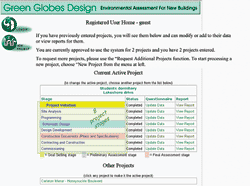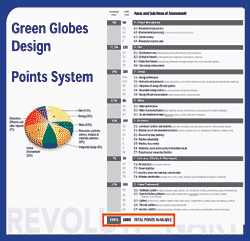How Is LEED Faring After Five Years in Use?
USGBC plans on the horizon
To a great extent, LEED is suffering from its own success. Because there was such a great need for environmental guidance, people latched onto it so quickly-and demanded so many versions for different building types-that USGBC has yet to have enough time and resources to fully refine and add depth to the original model. Nonetheless, says Peter Templeton, USGBC director of LEED and international programs, "We are very much listening to the feedback."
Templeton believes some concerns will be addressed in LEED 2.2, which is currently under development for tentative release in the fall. For example, this version will reference the 2004 edition of ASHRAE 90.1, thereby avoiding the vexing energy-modeling problem created by the 1999 version of the standard. It will also include an online tool that promises to be more user-friendly and cut down on the paperwork. Templeton expects other changes in the documentation and review process to make it easier for applicants to cope with the administrative process. And he anticipates some refinement in the credits themselves.
|
Larger, more structural plans are being considered down the road for LEED version 3.0, which Nigel Howard, vice president of LEED and international programs at USGBC, believes will be a template toward which all the LEED products can gradually progress according to their respective timetables. Says Howard, "We don't envision making LEED 3.0 more stringent-but we want to make it much smarter."
As an example, Howard suggests an ecological index for sustainable sites. In this scenario, there could be a greater range of possible points, depending on the potential impact of a project on its local habitat. A project built on a derelict site with no species of flora and fauna will show a net improvement-and therefore earn more points-if part of the area is landscaped. And a project built on woodland could be penalized to a greater extent than one built on farmland, because the original woodland would have had far more ecological diversity to start with than the farmland, and therefore the construction would have a greater negative effect on site conditions.











